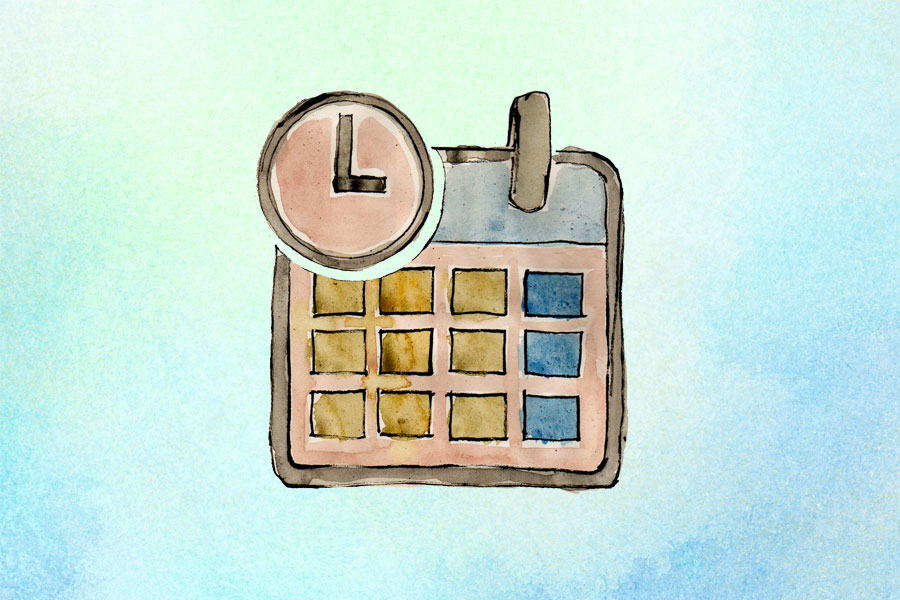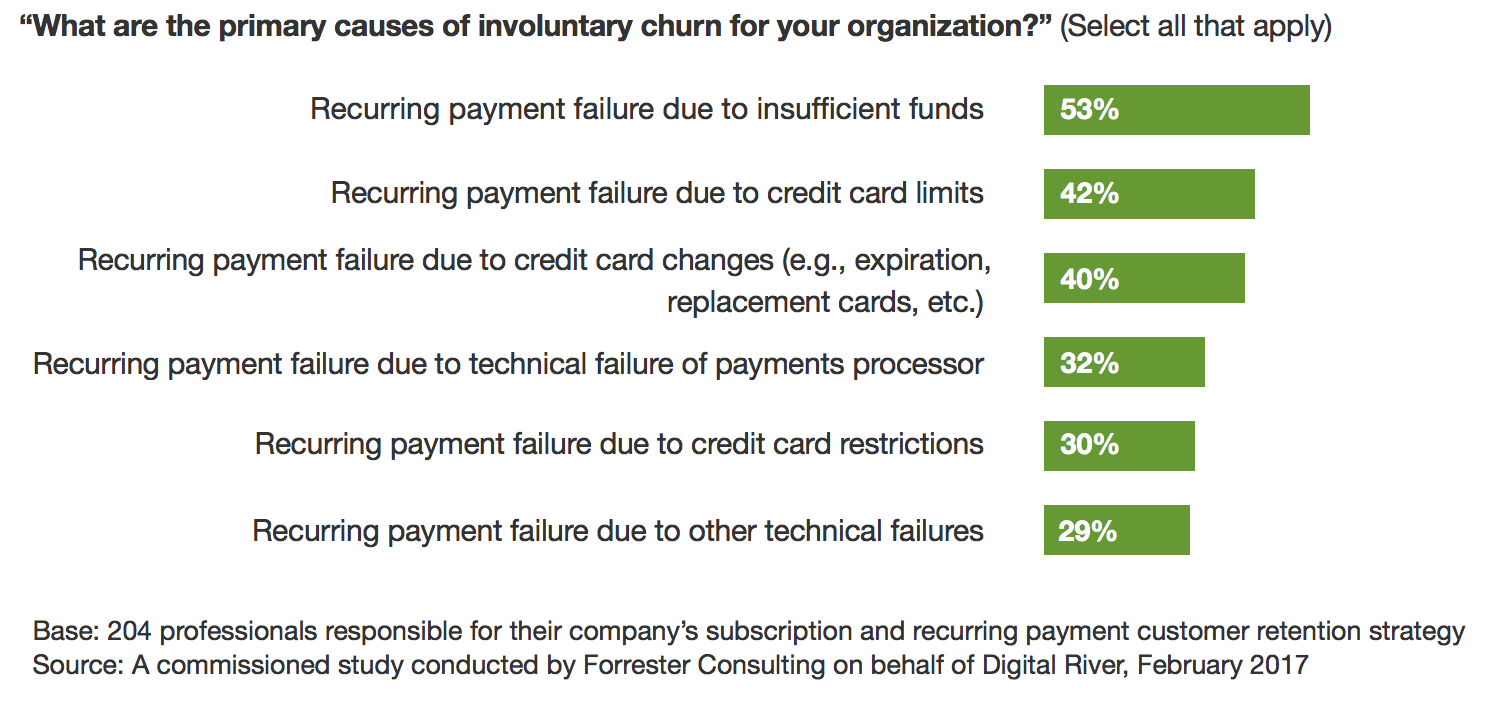Subscriptions ‘Dun’ Right
September 25, 2017 - Best Practices

Do you own a subscription-based business? What if there was a strategy that could instantly connect you with highly interested buyers at half of your typical customer acquisition cost? Would you be interested?
Nearly every subscription-based business has this source of valuable customers right under their nose — that is, unless they have never lost a customer to involuntary churn. While many businesses simply discount these customers as a cost of doing business, the most successful subscription-based businesses reduce churn rate, recover revenue, and even improve their word of mouth by optimizing subscription dunning practices.
In this post, we will look at some best practices to ensure that your subscription dunning is running at optimal efficiency.
[content_upgrade cu_id=”222″]Download our free subscription dunning email template to see our best practices in action![content_upgrade_button]Click Here[/content_upgrade_button][/content_upgrade]
What is Subscription Dunning?
Involuntary churn caused by payment failure accounts for about 34% of the overall churn rate and 12% of total revenue loss from non-renewals, according to a Forrester Research. The most common reasons for involuntary churn are insufficient funds, credit card limits, and credit card changes. In other words, a company generating $1 million in annual revenue is losing $120,000 per year from existing customers that are likely still interested in the service!

The worst part is that it’s not easy to make up that revenue. Forrester Research found that 91% of businesses say that it costs twice as much to acquire a new customer than keep an existing customer. The hypothetical company mentioned earlier is not only losing out on $120,000 per year in revenue, but it’s costing them more than double to replace the lost revenue with new customers. Involuntary churn hits a company’s top- and bottom-line.
Subscription dunning is the process of reducing involuntary churn by reminding customers to update their payment information. By sending the right reminders at the right time, companies can recover revenue, reduce churn rates, and even improve word of mouth.
Get in the Right Frame of Mind
Many basic dunning solutions simply fire off generic emails every time that a payment fails. For example, these solutions may wire up a transactional email service to a Stripe web hook. It may be incredibly simple to implement this type of system, but it’s not very effective at getting customers to renew. These harsh emails may also put off customers that may be otherwise willing to renew and doesn’t help your brand’s reputation.
It’s better to think of dunning as a marketing communication rather than a generic transactional email. Customer retention funnels should be driving traffic to a conversion point, just like a marketing funnel, with the goal of optimizing the conversion rate. These emails should remind customers of how much they value your product or service without sending a demanding email that can be off-putting to customers.
Think of dunning as a marketing communication rather than a generic email. Click To Tweet
For example, a software-as-a-service company may send an extra email or two designed to get customers to sign in to the app rather than update the credit card. After they’ve signed in, they will see a notice to update their credit card without the need to send a demanding email. Product-based companies may need to send a more direct email requesting updated payment information, but it’s important to remind the customer why they should still want the product.
Overcoming Technical Challenges
Subscription dunning may seem rather straightforward on the surface, but the process can quickly become very challenging. The good news is that many payment processors automatically update credit cards that have expired, which has greatly reduced the burden on subscription businesses to remind customers. The bad news is that there are many challenges and edge cases to consider when implementing a subscription dunning system.
For example, some common challenges and edge cases that we’ve come across include:
Multiple Payment Methods: Many businesses accept multiple payment methods, which can make it challenging to implement subscription dunning across the board. At Foxy, we solve this by abstracting these payment methods and make it easy to apply the same subscription dunning processes across all payment methods.
Product-based Subscriptions: Product-based subscription businesses can’t continue sending products to non-paying customers, which means that they need to integrate subscription dunning with order management. At Foxy, we enable product-based businesses to automatically change the due dates on the subscription to avoid sending products to customers that haven’t updated their payment information.
Payment Processor Integration: Ecommerce platforms may not be fully-integrated with payment processors. For example, a customer that updates an email address on an ecommerce platform may not update it in a payment processor. At Foxy, we offer a fully-integrated solution that ensures updates are applied across the board.
Before implementing a subscription dunning system, it’s important to consider payment methods, order management, product types, and other elements that could influence implementation from a technical standpoint. Foxy tries to alleviate many of these concerns by abstracting payment methods and platforms, while giving users granular control over how they want to implement subscription dunning in their business.
Design Your Outreach Strategy
The next step is designing a subscription dunning strategy and optimizing it over time to improve conversion rates. When developing this strategy, it’s important to consider both the timing and the content of the messaging for maximum effect.
How much should you collect?
A customer may update a credit card after a long period of inactivity. In this case, you will need to decide how far back to collect unpaid invoices. You should also consider whether to change the due date following a late payment. For example, a customer might make a payment 28 days late and then be charged again in just a day or two when the subscription comes due again.
Another element to consider is how long to continue retrying a credit card before giving up. For instance, a credit card may have failed due to a credit limit, which means that it makes sense to try again. But, surprising a customer six months later with a giant charge is probably not a good idea for a company’s brand reputation. Late credit card changes could also lead to costly chargebacks that could have a negative impact on the bottom line.
How often should you reach out?
The aggressiveness of outreach depends a lot on a company’s business model and subscription terms. For example, businesses may have a lower risk of non-payment than consumers, so it may be appropriate to take a more lenient approach.
Here’s an example of some timelines to consider:
What should the emails say?
Subscription dunning emails should be highly personalized to maximize the conversion rate. Often times, this means incorporating data from multiple sources, including the payment processor and the ecommerce platform. It is well worth the effort to put some time into these emails since they can have a dramatic effect on reducing churn rates.
Subscription dunning emails should generally include the following elements:
Company Logo: Use an attractive email template that includes your company’s logo to build trust and reassure users that the email isn’t spam.
Unique Tone: Use your company’s ‘voice’ in the message. If you’re brand is quirky, don’t make subscription dunning emails sound boring and mundane.
Consider an Offer: You may want to include a special offer to incentivize users to update their information, especially if it’s a later-stage reminder.
Set Expectations: Set clear expectations that explain what happened and communicate what will happen if the customer doesn’t take action by a certain date.
Update Link: Include a link that enables customers to update the payment information on their own without calling a number or sending an email.
Alternative Contact: Some customers prefer talking to a human or sending an email, so be sure to include a phone number and email address.
Signature: Sign the email from a person rather than a company and consider including an image of that person to make it personal.
[content_upgrade cu_id=”222″]Download our free subscription dunning email template to see these best practices in action![content_upgrade_button]Click Here[/content_upgrade_button][/content_upgrade]
The Bottom Line
Involuntary churn can be extremely costly for subscription businesses, which means that a great subscription dunning strategy can have a huge return on investment. By keeping these tips in mind, businesses can optimize their dunning strategies to reduce churn, recover revenue, and improve brand reputation. Those struggling with technical implementations may also want to consider Foxy for abstracting away many common issues.
